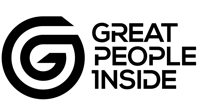Hybrid work was meant to be the great equaliser, a balance between flexibility and collaboration, the best of both worlds. But for many organisations, what began as an exciting experiment is fast becoming a source of friction, frustration and fading culture.
Leaders, HR managers, and operational teams (especially baby boomers) are grappling with the gap between expectation and reality.
As a manager, I’d like to invite you to pause for a moment and think about the question:
“How might I be contributing to this?”
You worked hard to implement the policies, to design the schedules, and yet, the promised land of engaged, collaborative employees feels further away than ever.
The real reason for your hybrid model failing isn’t just because of your policies. It’s also because of your false hidden beliefs shaping them.
One of the most prevalent and damaging false beliefs you might have is this:
“People who have hybrid work arrangements ‘have enough’ time in the office when they are in to have interactions with others.”
This seemingly harmless assumption is a trap.
According to a 2025 AHRI report, disconnection between colleagues is now the top disadvantage of hybrid work, cited by 57% of employers.
With over 6.7 million Australians working from home at least part of the time, and three office days being the most common arrangement, the stakes are high.
Left unchecked, it erodes culture, stifles innovation, and ultimately derails hybrid models. Even if your belief might be true for some, it might be wildly incorrect for others – and it can spiral into other false beliefs that try to prove your initial belief correct.
Here are some other ways I have seen this false belief spiral:
Limiting Belief #1: You Start To Believe Interaction Is Automatic
What people think:
Many leaders assume that by simply bringing people into a shared physical space, meaningful connection, collaboration, and trust will happen on their own.
What actually happens:
In reality, hybrid office days are often jammed with back-to-back meetings, catch-ups, and urgent tasks. Employees come in to collaborate, but paradoxically, have less time for genuine informal connection. The water-cooler chats, chance encounters, and spontaneous brainstorms of the past don’t just “happen” anymore.
The fallout:
Teams become transactional. Relationships thin out. Colleagues only engage through scheduled meetings, and the subtle cues of teamwork, informal knowledge sharing, rapport, personal connection evaporate. Presence is mistaken for connection.
Limiting Belief #2: You Start To Believe Culture Lives Only in the Office
What people think:
Some leaders still hold on to a nostalgia for office culture. They unconsciously believe that the “real” employee experience, and the “real” culture only happens in person.
What actually happens:
This belief signals to remote workers that their contributions are less visible, their belonging less important, and their experience secondary. Proximity bias kicks in. Those in the office may be seen as more engaged or “in the know,” while remote colleagues feel excluded, undervalued, and always playing catch-up.
The fallout:
A fractured culture. Innovation slows as perspectives from hybrid and remote employees aren’t equally included. Retention suffers, as talent looks for employers that value flexible, inclusive culture.
In Australia, 3 out of 4 prime-aged workers say lack of flexibility would push them to leave. Leaders may believe they have one culture, but they’ve actually created two.
Limiting Belief #3: You Start To Believe One Size Fits All
What people think:
A universal hybrid policy “everyone in on Tuesday to Thursday” ensures enough connection for everyone.
What actually happens:
This ignores the very different needs of teams and individuals. Cross-functional projects may thrive on concentrated in-person sprints, while research teams need only occasional check-ins. Employees vary widely in how they connect and collaborate. Forcing uniformity leads to wasted commutes, disengagement, and resentment.
The fallout:
Employees show up but don’t get the social or collaborative dividends they expected. The office becomes a place of frustration rather than energy. For some, “enough” feels like “too much.” For others, it’s not enough of the right kind.
Breaking Free from Limiting Beliefs
The good news? The first step is awareness. Once you see the beliefs, you can choose better ones. Here’s how to replace them:
Be Intentional About Interaction
Don’t leave connections to chance. Design in-office days with structured collaboration, team-building, and informal connection opportunities. Facilitate, don’t just mandate.
Build a Digital-First, Inclusive Culture
Culture shouldn’t rely on physical presence. Invest in digital tools, hybrid facilitation training for managers, and communication practices that include everyone, everywhere.
Customise, Don’t Standardise
Replace rigid policies with team-led flexibility. Empower groups to define when in-person time is most valuable. Focus on outcomes, not attendance. Flexibility rooted in science is key.
Psychologists like Martin Seligman, Paul Zak, and John Medina have shown that wellbeing drives performance. Tools such as the Great People Inside (GPI) Psychometric GR8 Wellbeing Assessment can help identify employee wellbeing and prevent disengagement, while the GPI GR8 Remote Manager Tool equips managers with the insights needed to lead dispersed teams effectively.
The future of work isn’t about where people sit, it’s about how they connect, collaborate, and contribute. If your hybrid model is faltering, look beyond the policies. Challenge the limiting beliefs holding your organisation back.
The solution isn’t just a new policy. It’s a new mindset.
Our ebook, “Remote Teams, Real Results, Realistic Costs” provides some GR8 information on Remote and Hybrid Work. To grab a free copy, DOWNLOAD NOW!
